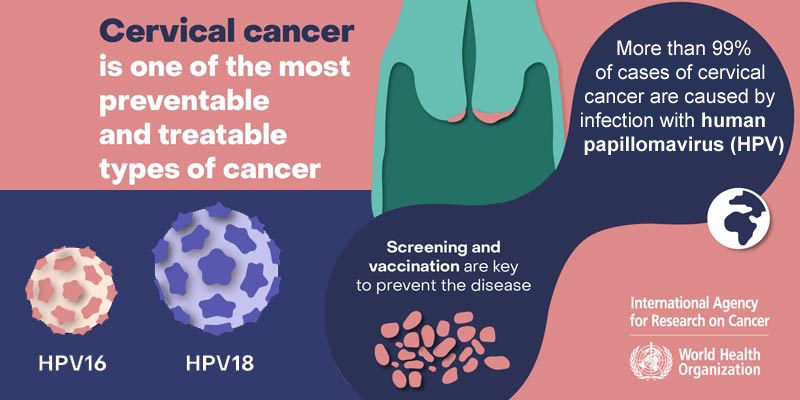- World
- Sep 23
Explainer - Quad Cancer Moonshot initiative
• The United States, Australia, India, and Japan announced the launch of Quad Cancer Moonshot initiative to save lives in the Indo-Pacific region by combating cervical cancer.
• With this initiative, the Quad countries have committed to work together to address gaps in the cervical cancer care and treatment ecosystem in the Indo-Pacific countries. It lays the groundwork to address other forms of cancer as well.
• This initiative is part of a broader set of announcements made at the Quad Leaders Summit in Wilmington, Delaware.
• As India’s contribution to the Cancer Moonshot initiative, PM Narendra Modi announced the dedication of a grant of $7.5 million to cancer testing, screening, and diagnostics in the Indo-Pacific region.
Significance of the initiative
• Cancer is a global challenge that requires collective action and cooperation beyond any single nation’s effort. By working together, the Quad aims to implement innovative strategies to prevent, detect, treat and alleviate the impact of cancer on patients and their families.
• Quad partners also intend to work, within respective national contexts, to collaborate in advancing research and development in the area of cancer and to increase private sector and non-governmental sector activities in support of reducing the burden of cervical cancer in the region.
• The Quad Cancer Moonshot will serve to strengthen the overall cancer care ecosystem in the Indo-Pacific by improving health infrastructure, expanding research collaborations, building data systems, and providing greater support for cancer prevention, detection, treatment, and care.
• Cervical cancer, while preventable through vaccination and usually treatable if detected early, remains the third leading cause of cancer deaths among women in the Indo-Pacific region.
• Fewer than one in 10 women in the Indo-Pacific have completed their human papillomavirus (HPV) vaccination series, and fewer than 10 per cent have undergone recent screening. Many countries in the region face challenges related to healthcare access, limited resources, and disparities in vaccination rates.
• Through this initiative, Quad countries will work to address these gaps by promoting HPV vaccination, increasing access to screenings, and expanding treatment options and care in underserved areas.
• Altogether, the scientific experts assess that the Quad Cancer Moonshot will save hundreds of thousands of lives over the coming decades.
Cervical cancer
• Cervical cancer develops in a woman’s cervix (the entrance to the uterus from the vagina).
• Cervical cancer starts in the cells of the cervix.
• The cervix connects the uterus to the vagina (birth canal).
• Cervical cancer usually develops slowly over time. Before cancer appears in the cervix, the cells of the cervix go through changes known as dysplasia, in which abnormal cells begin to appear in the cervical tissue. Over time, if not destroyed or removed, the abnormal cells may become cancer cells and start to grow and spread more deeply into the cervix and to surrounding areas.
• Almost all cervical cancer cases are linked to infection with high-risk human papillomaviruses (HPV).
• HPV is a common sexually transmitted infection.
• Although most infections with HPV resolve spontaneously and cause no symptoms, persistent infection can cause cervical cancer in women.
• Cervical cancer is the most common type of cancer caused by HPV.
• Effective primary (HPV vaccination) and secondary prevention approaches (screening for, and treating precancerous lesions) will prevent most cervical cancer cases.
• When diagnosed, cervical cancer is one of the most successfully treatable forms of cancer, as long as it is detected early and managed effectively.
• With a comprehensive approach to prevent, screen and treat, cervical cancer can be eliminated as a public health problem.
• In May 2018, the WHO Director-General announced a global call for action to eliminate cervical cancer, underscoring renewed political will to make elimination a reality and calling for all stakeholders to unite behind this common goal.
• In August 2020 the World Health Assembly adopted the Global Strategy for cervical cancer elimination.
Cervical cancer cases in India
• Cervical cancer ranks as the second most prevalent cancer in India.
• It accounts for nearly one-fourth of the world’s cervical cancer deaths despite being largely preventable.
• Current estimates indicate that every year approximately 1.25 lakh women are diagnosed with cervical cancer, and over 75,000 die from the disease in India.
• It is estimated that HPV types 16 and 18 (HPV-16 and HPV-18) together contribute to approximately 70 per cent of all invasive cervical cancer cases worldwide.
• The most promising intervention for preventing cervical cancer is vaccination against human papillomavirus (HPV).
• Presenting the Interim Budget for 2024-2025, Union Finance Minister Nirmala Sitharaman said the government will encourage vaccination against cervical cancer for girls in the 9-14 age group.
• Public health is a state subject under the State List of the Seventh Schedule to the Constitution.
• In December 2022, the Centre urged all states and Union Territories to create awareness on prevention of cervical cancer and the importance of HPV vaccine among girl students across the country.
Manorama Yearbook app is now available on Google Play Store and iOS App Store


